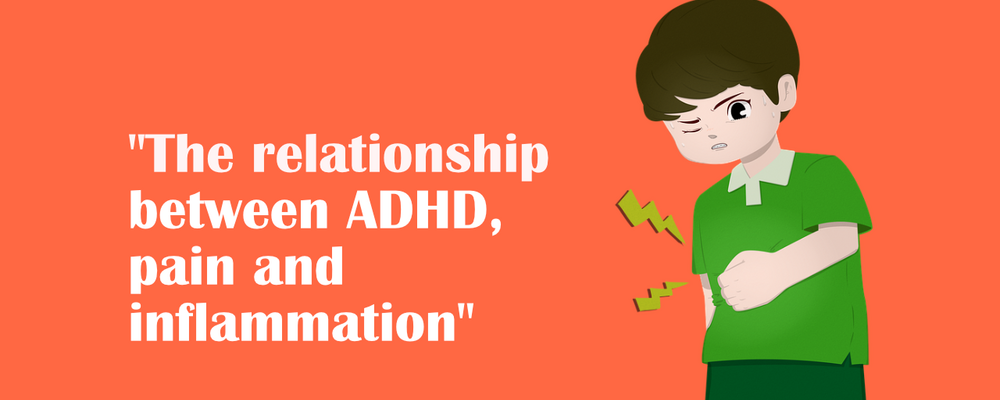
- Home
- Research
- Find research
- The relationship between ADHD, pain and inflammation
The relationship between ADHD, pain and inflammation
Anna Spyrou meets Sara Lundqvist to discuss her PhD project on ADHD, pain and inflammation

Sara, what is your background?
I am a consultant in child and adolescent psychiatry and a PhD student. I did my medical studies in Umeå and after a few diverse temp jobs and a partner who wanted to go home to Gothenburg, I did an internship in Kungälv and continued directly with an internship at child and adolescent psychiatry in Gothenburg. At the job interview I had with me my oldest son who was then 6 months, this summer he turns 16 years old. In child psychiatry, I have worked widely in outpatient care with all types of patients and all types of psychiatric problems in children and adolescents.
You are doing your PhD at the GNC, what is the subject of your PhD?
For a while, I was a consultant physician in the team for chronic pain in children and this made me curious about the link between ADHD and pain and inflammation. That was the starting point for my thesis, which is about the relationship between ADHD, pain and inflammation. I am very curious as a person and I am stimulated by the feeling that there is more to understand and I had and still have that feeling when meeting with our children and young people with ADHD.
Your first published paper was called "ADHD, pain, inflammation, and quality of life in children and adolescents - a clinical study protocol". Please tell us about this study. What type of pain did you investigate?
We asked children and young people and their families when they came to child and adolescent psychiatry on their first visit if they wanted to participate in the study and answer questions about how they experience functional pain (pain in the form of headaches and stomach aches of unknown cause). We asked all children and young people regardless of basic diagnosis. What was common to the group was that they had a contact with specialist psychiatry.
What results came out of the first paper? Where these the results you expected?
We found that children in contact with child and adolescent psychiatry experience a lot of pain and especially girls experience more stomach pain than girls without psychiatric problems. Within the group of children and adolescents with psychiatric conditions, children and adolescents with neuropsychiatric difficulties experienced more pain than children and adolescents with depression and anxiety.
How may your research results be applied to clinical work?
I hope that more attention will be paid to the fact that children in psychiatry are a vulnerable group in terms of their experience of pain. I hope we will understand more about how the brain works and the impact it has on the expression of illness and health.
If you had the chance to do this study again, is this anything you would do differently?
It would have been good if we had found a validated questionnaire that we could use instead of making our own. The selection of children and categorisation into diagnostic groups was very vulnerable as such a large proportion of the children were still under investigation and had not received a definitive diagnosis. There was also a group of children in outpatient care and since some diagnostic conditions are mainly treated in inpatient care, some diagnostic groups were very small.
Your 2nd paper is under review. If you are allowed, please can you tell us a bit about this paper?
It is an epidemiological study where we look at how school children responded to a questionnaire, MeSHe (Mental health without boarders). We look at how they responded to questions about psychiatric problems and perceived pain, frequency and intensity.
What will the third article focus on?
The next article is another part of the epidemiological study looking at psychiatric diagnosis and somatic disorders.
5 Interesting facts about yourself
1. A few things about me that not everyone knows is that in addition to 3 children and a partner, I also live with 2 turtles named Thunder and Mole. They keep us busy with tricky communication challenges and sometimes some worry. A dream would be to travel to the Caribbean and help guard turtle eggs and the newly hatched babies.
2. I am an active person who likes to exercise as often as I can, both weightlifting and yoga.
3. I grew up in Västerbotten and one summer when I was 12 years old I learnt to ride a unicycle and juggle, which I can still do, albeit rather rusty. When I was growing up, we had a summer house by the Baltic Sea and I have always liked being near and in water.
4. I enjoy mountain hiking and mountain fishing. As an adult, we now live on the other side of the country with the water still present, in the form of the west sea and the west coast rain-:).
5. I like to listen to music and have a very broad taste and like most things. My taste in books, on the other hand, is narrow, but there are a few real favourites and many hard-to-please ones; right now my favourite author is Per Olov Enqvist.